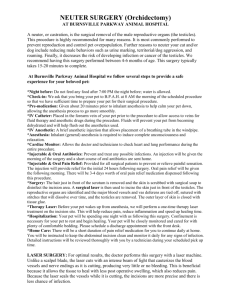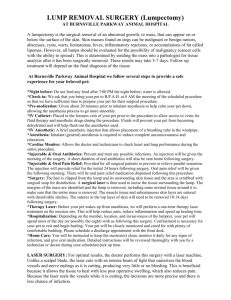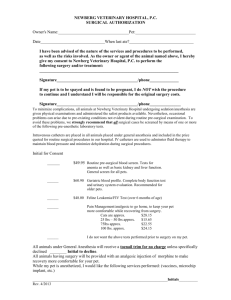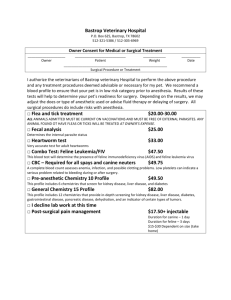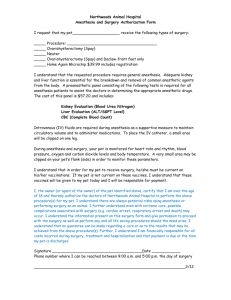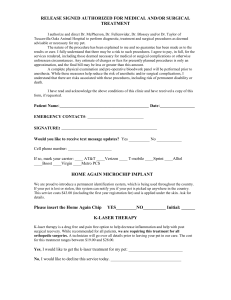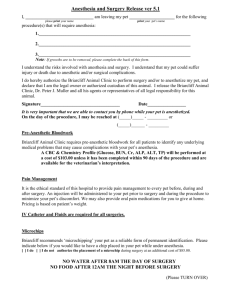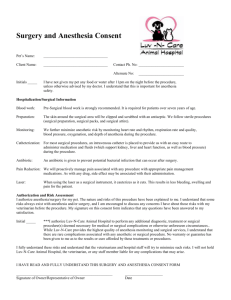Feline Declaw - Burnsville Parkway Animal Hospital
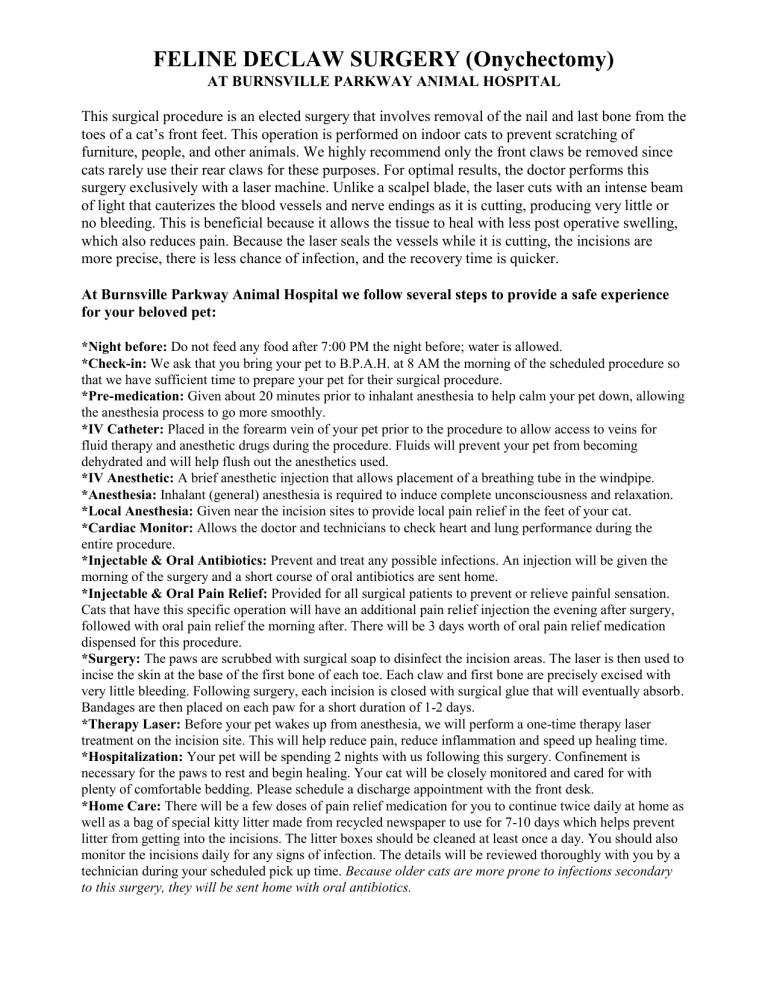
FELINE DECLAW SURGERY (Onychectomy)
AT BURNSVILLE PARKWAY ANIMAL HOSPITAL
This surgical procedure is an elected surgery that involves removal of the nail and last bone from the toes of a cat’s front feet. This operation is performed on indoor cats to prevent scratching of furniture, people, and other animals. We highly recommend only the front claws be removed since cats rarely use their rear claws for these purposes. For optimal results, the doctor performs this surgery exclusively with a laser machine. Unlike a scalpel blade, the laser cuts with an intense beam of light that cauterizes the blood vessels and nerve endings as it is cutting, producing very little or no bleeding. This is beneficial because it allows the tissue to heal with less post operative swelling, which also reduces pain. Because the laser seals the vessels while it is cutting, the incisions are more precise, there is less chance of infection, and the recovery time is quicker.
At Burnsville Parkway Animal Hospital we follow several steps to provide a safe experience for your beloved pet:
*Night before: Do not feed any food after 7:00 PM the night before; water is allowed.
*Check-in: We ask that you bring your pet to B.P.A.H. at 8 AM the morning of the scheduled procedure so that we have sufficient time to prepare your pet for their surgical procedure.
*Pre-medication: Given about 20 minutes prior to inhalant anesthesia to help calm your pet down, allowing the anesthesia process to go more smoothly.
*IV Catheter: Placed in the forearm vein of your pet prior to the procedure to allow access to veins for fluid therapy and anesthetic drugs during the procedure. Fluids will prevent your pet from becoming dehydrated and will help flush out the anesthetics used.
*IV Anesthetic: A brief anesthetic injection that allows placement of a breathing tube in the windpipe.
*Anesthesia: Inhalant (general) anesthesia is required to induce complete unconsciousness and relaxation.
*Local Anesthesia: Given near the incision sites to provide local pain relief in the feet of your cat.
*Cardiac Monitor: Allows the doctor and technicians to check heart and lung performance during the entire procedure.
*Injectable & Oral Antibiotics: Prevent and treat any possible infections. An injection will be given the morning of the surgery and a short course of oral antibiotics are sent home.
*Injectable & Oral Pain Relief: Provided for all surgical patients to prevent or relieve painful sensation.
Cats that have this specific operation will have an additional pain relief injection the evening after surgery, followed with oral pain relief the morning after. There will be 3 days worth of oral pain relief medication dispensed for this procedure.
*Surgery: The paws are scrubbed with surgical soap to disinfect the incision areas. The laser is then used to incise the skin at the base of the first bone of each toe. Each claw and first bone are precisely excised with very little bleeding. Following surgery, each incision is closed with surgical glue that will eventually absorb.
Bandages are then placed on each paw for a short duration of 1-2 days.
*Therapy Laser: Before your pet wakes up from anesthesia, we will perform a one-time therapy laser treatment on the incision site. This will help reduce pain, reduce inflammation and speed up healing time.
*Hospitalization: Your pet will be spending 2 nights with us following this surgery. Confinement is necessary for the paws to rest and begin healing. Your cat will be closely monitored and cared for with plenty of comfortable bedding. Please schedule a discharge appointment with the front desk.
*Home Care: There will be a few doses of pain relief medication for you to continue twice daily at home as well as a bag of special kitty litter made from recycled newspaper to use for 7-10 days which helps prevent litter from getting into the incisions. The litter boxes should be cleaned at least once a day. You should also monitor the incisions daily for any signs of infection. The details will be reviewed thoroughly with you by a technician during your scheduled pick up time. Because older cats are more prone to infections secondary to this surgery, they will be sent home with oral antibiotics.
